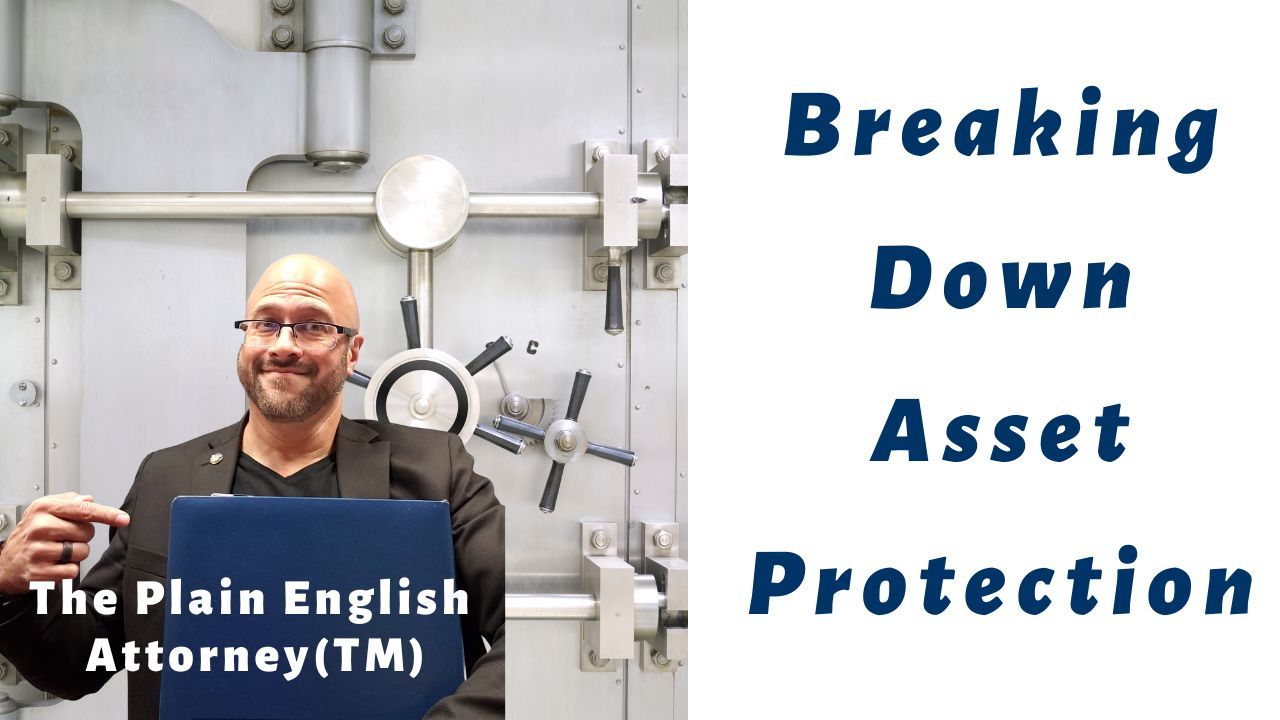Breaking Down Asset Protection
Apr 17, 2023
Good asset protection planning isn’t as complicated as it may seem. If thought about the right way, it can actually be pretty simple to follow. Unfortunately, there is no magic wand you can waive over a pile of assets and it is instantly protected from lawsuits, divorcing spouses, the elements, and acts of God. For example, in this week’s video (released early morning on Thursday, April 20, 2023), I cover the pros and cons of how Moroccan soccer player Achraf Hakimi protected his vast wealth by systematically diverting his paycheck to his mother so when his wife wanted a divorce there was nothing in his name. While it sounds like this strategy worked at this time, there is no guarantee other problems won’t pop up that wouldn’t have been solved by a more comprehensive plan. Here is the thought process to consider when it comes to asset protection:
- What asset needs to be protected?
- How is the asset best titled?
- Is there a way to make the asset or a lawsuit unattractive?
- What legal structures can be put in place, preferably in a layered way?
Let’s use an example from one of my favorite television shows The West Wing. Rob Lowe’s character Deputy Communications Director Sam Seaborn was previously a corporate attorney, and in a flashback episode he works with an oil company to set up the purchase of an oil tanker in such a way that it protects the company from legal liability.
What asset needs to be protected?
While it may seems like the oil tanker is what needs to be protected, the real desired protection is around the main oil company. Yes, the oil tanker as an asset should be protected, too, but it is not the main thing they are worried about. In fact, in the episode one of the biggest concerns was that the oil tanker was a relatively inexpensive and older vessel, and the liability would be around the tanker crashing into another vessel or object and creating an ecological disaster.
How is the asset best titled?
In this case, the question really is how should the asset NOT be titled. The oil company does not want to take direct ownership over the tanker even though it would technically come under the main company’s corporate umbrella. The objective was to separate the main oil company’s assets from the oil tanker’s potential liability, and keeping them under the same protective umbrella means that while the shareholders wouldn’t be at risk the other corporate assets would be on the chopping block in a lawsuit.
Instead, Sam described that they set up a separate corporation to own the oil tanker. While the show made a point of saying it was in a “corporation” and there might have been some other tax reasons to go with that entity, if the vessel were in a North Carolina limited liability company and was sued, then the most that the people suing could get is something called a “charging order” so that if any profits are declared then the party to the lawsuit could claim those profits. This is one of those features of limited liability companies, along with (potentially) some better depreciation schedules for tax deductions, that make them more attractive than other corporate entities
Is there a way to make the asset or a lawsuit unattractive?
In the oil tanker purchase situation, there was an additional piece of lawsuit protection thrown in. They mortgaged the oil tanker “from top to bottom” so that if a lawsuit ever did penetrate the corporate shield there would only be debt. Meanwhile, the company would have the use of the tanker to ship its oil. So encumbering the asset in debt actually lessens the potential anyone would want to bring a lawsuit, if they could get through the corporate shield in the first place.
What legal structures can be put in place, preferably in a layered way?
In this example, there are a number of legal entities and structures described, but there could actually be more.
- The oil company’s own corporate structure
- The separate corporate structure, most likely a limited liability company, that would own the oil tanker
- A mortgage on the vessel so the oil company could almost immediately pull out all value in the tanker leaving just debt in the event of a successful lawsuit
So what else could be added to this?
- A separate company could be put together to run the operations of the ship and hire employees, which could bring a more favorable tax status while separating employee and management liability from the asset itself
- Lease agreements either from the oil company to the LLC owning the tanker, or the separate company hiring and managing the employees, and having the oil company hire the management corporation.
As you can see, it looks like a complicated structure (and it kinda is), but when you examine the different elements one at a time and how they work with the structures around them, the plan is more understandable. Over the next few weeks and months, I’ll be applying these principles to different personal asset protection goals while examining different legal documents and strategies.
Stay connected with news and updates!
Join our mailing list to receive the latest news and updates from our team.
Don't worry, your information will not be shared.
We hate SPAM. We will never sell your information, for any reason.
